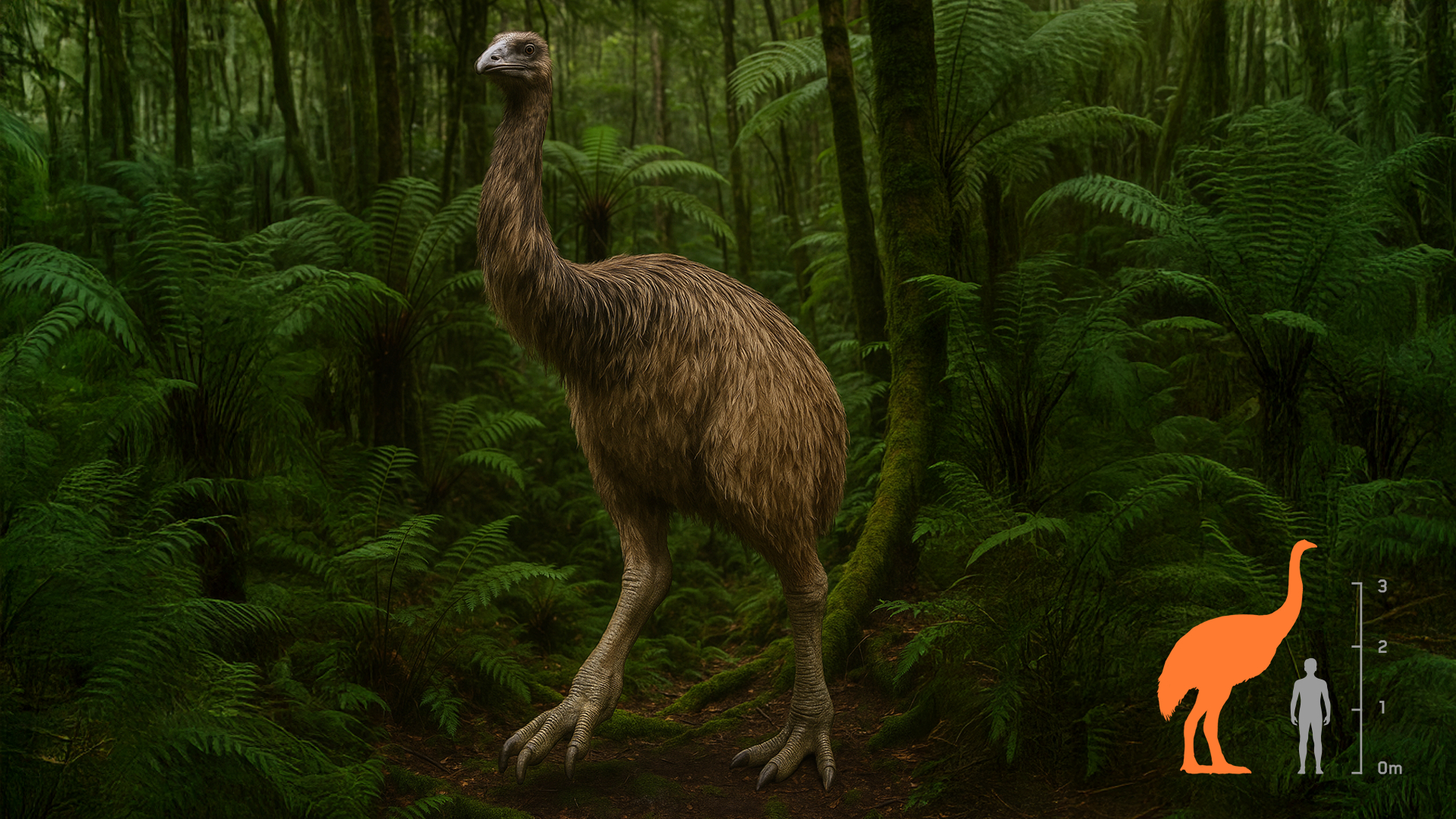T4K3.news
Colossal Biosciences announces plans to revive giant moa bird
The biotech firm is collaborating to resurrect the extinct giant moa, raising significant scientific challenges.

Colossal Biosciences seeks to resurrect the giant moa bird, but experts warn of significant challenges ahead.
Challenges of de-extincting the giant moa bird loom larger than for dire wolves
Colossal Biosciences, a biotech firm, plans to revive the extinct giant moa birds alongside Sir Peter Jackson and Indigenous partners. The South Island giant moa was once a towering figure in New Zealand before being hunted to extinction. Critics argue that past projects, like resurrecting dire wolves, faced similar skepticism, as these genetically modified animals lacked true authenticity. Moa's closest living relatives are small birds, complicating genetic restoration efforts. Experts warn that the unique traits of moa may be too complex to replicate, given millions of years of evolution separating them from modern birds.
Key Takeaways
"Moa and their closest living relatives descended from a group of small flying birds."
This highlights the evolutionary gap complicating the moa restoration effort.
"Genetically engineering specific genes in an emu to match a moa could have dire developmental consequences."
A scientist emphasizes the risks involved in the genetic modification process.
"Our exogenous development team is exploring different strategies for artificial egg incubation."
Colossal's response indicates they are working on novel methods to handle eggs for revived moa.
"There’s a lot of evolutionary time between the moa and its closest relatives."
This statement underscores the challenges of accurately reviving such a unique species.
The effort to bring back the giant moa reflects a growing ambition in biotechnology. However, as experts highlight, the scientific challenges are significant. Genetic attempts to recreate lost species raise ethical questions about animal welfare and authenticity. The alliances with Indigenous communities also show the importance of aligning scientific progress with cultural sentiments. Critics argue that the focus on de-extinction might distract from current conservation needs, making this endeavor a complex crossroads of science and ethics.
Highlights
- De-extinction may not be as simple as rewriting a genetic script.
- Moa's return is about more than just science; it's about ethics.
- How can we bring back what billions of years of evolution shaped?
- Is it ethical to modify animals to recreate extinct species?
Ethical concerns surround the moa de-extinction project
Efforts to resurrect the giant moa bird face backlash from critics questioning the ethics of genetic modification and animal welfare. The intricate relationship between science and Indigenous perspectives adds layers of complexity to the project.
The journey of reviving the moa may redefine our understanding of extinction and conservation.
Enjoyed this? Let your friends know!
Related News
:max_bytes(150000):strip_icc()/GettyImages-2226699333-6e8ce3ffae0e4274b86ad24510648aa5.jpg)
S&P 500 and Nasdaq Close at Record Highs

New Paramount merger finalized with numerous challenges ahead

Commodore acquisition finalized

Donovan Mitchell and Coco Jones announce engagement

Konami to host Suikoden livestream on August 5

Elon Musk reveals plans to revive Vine with AI

OpenAI announces new features for ChatGPT

Bend It Like Beckham sequel officially announced
